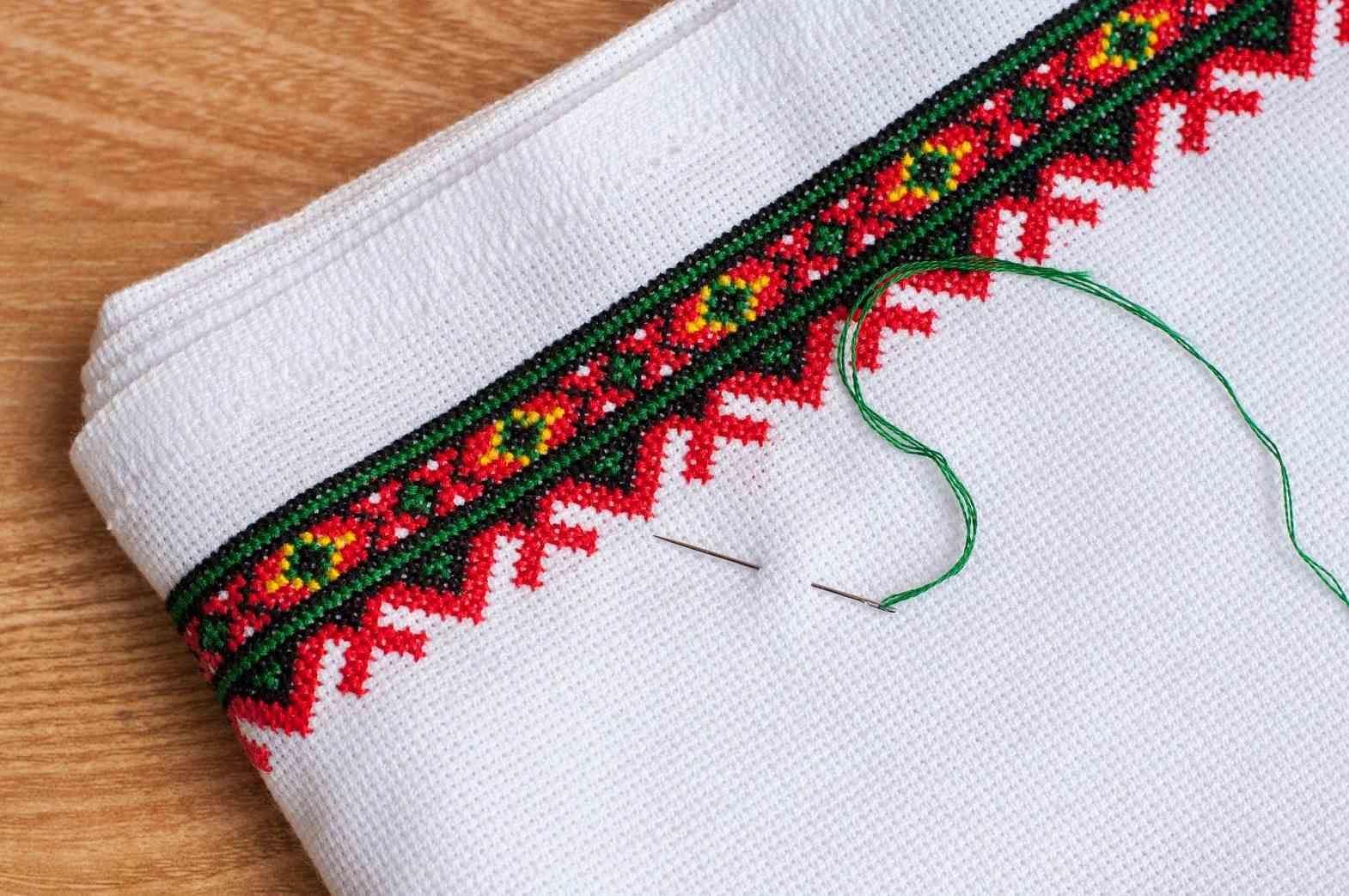Borders have always been a great form of creativity for textile pattern and decoration enthusiasts. Whether constructed or printed, borders have added an extra dimension to textile pieces, including costumes and domestic textiles. Embellishment, whether through embroidery or appliqu�, has often been chosen as a finishing touch to textiles.
The four textile pieces illustrated in this article date back to the 1850s, showcasing the artistry and technical skill that goes into creating decorative borders. These examples serve as a reminder that embellished borders can come from various cultures, eras, and corners of the world, including contemporary times.
While examining decorative textile work from a specific era provides insight into the creative journey of that period, it's essential to remember that this journey spans throughout human history. From the earliest forms of artistic expression on rocks and bones to the millions of individuals creating unique works today, creativity knows no bounds.
In many respects, understanding a piece of embroidery requires considering its cultural and temporal context. However, sometimes it's equally rewarding to pause and simply appreciate the power of patterns and decorations or admire the technical skill displayed in a single piece without delving into its cultural specifics.
This approach allows us to experience something anew, similar to the wonder a child feels when encountering a place or object for the first time. While we often seek to learn about the origin, making process, age, and other details of a textile, what truly matters is the sensory experience. If an embroidered border engages multiple senses, it has likely fulfilled its purpose.
This article is about how embroidery borders were used to deliberately enhance an item, to make it seem somehow more precious, attractive, and desirable even, but textile embellishment seems so much more than that. Embroidery was often imbued with spiritual significance with pattern work projecting, through symbolism, ways to protect or enhance the individual and through them the community.
However, it was also about the individual maker, most of who were and still are, unknown. Whether that individual maker followed a set pattern as in the illustrations shown, or followed a cultural pattern through the copying, generation after generation of a set style that identified a community, or expanded into the world of unique creativity following a path that no one had set out beforehand, it is the hand and the eye, the needle and the thread, the creative and the experience that are paramount. Whether we see a decorative piece in its historical moment, whether we know its technical details, whether we even know the individual maker, or not, what is really important?
It is the moment of first experience to see a creative life as being made up of a seemingly endless display of first experiences. In the manmade world these can be anything from the pattern on a manhole cover, a torn fragment of patterned textile, a selection of decorative buttons, a crocheted blanket, or indeed an embroidered border, the list is really endless. As far as the natural world is concerned, the list may well be even longer and the experience more profound, whether it be the dappling shadow of leaves, the buzzing of insects, the sound of a birds wings as it makes its way across your field of vision, or the crashing of the ocean waves as they crash along the shore.
We are constantly looking, examining, and describing objects and themes to ourselves, whether in the artificial or natural world. In that respect, an embroidered piece of embellishment becomes another experience, something to suck into the psyche to perhaps use creatively at some point in the future.
Although our contemporary world of instant picture access such as Instagram, and our seemingly endless picture corralling at Pinterest and Tumblr are often criticised by those who see the end of civilization in site, this is what creative people have been doing for generations, collating and banking visual experiences inside their heads, that the rest of the world is now seeing the relevance of using your eyes to see the world more clearly and more holistically, can only ever be a good thing.
This article was originally published in the Design, Decoration and Craft at the Textile Blog.








Comments